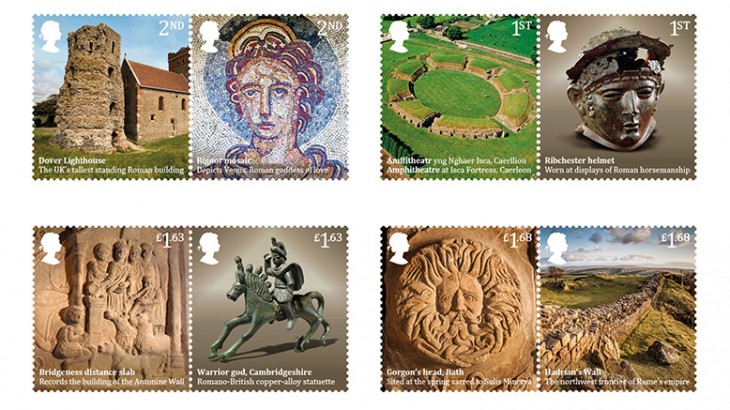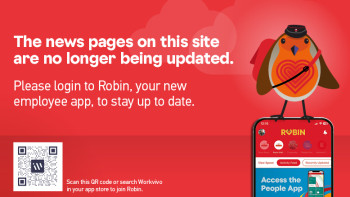Roman Britain

We have today revealed images from a new set of Special Stamps being issued to celebrate Roman life and culture in Britain.
The eight stamps demonstrate the sophistication, technical brilliance and artistry of Roman Britain with images of sites and key artefacts - all of which remain in Britain today.
Featured in the set are: Dover Lighthouse; Bignor mosaic; Caerleon Amphitheatre; Ribchester helmet; Bridgeness distance slab; Warrior god, Cambridgeshire; Gorgon’s head, Bath; and Hadrian’s Wall.
Today, it is still possible to see the legacy of Rome by visiting standing remains such as Hadrian’s Wall and the amphitheatre at Newport or by seeking out the huge variety of Roman artefacts that can be viewed in museums across the UK.
Royal Mail worked with the British Museum in the development of the stamp issue.
Roman Britain
For almost 400 years - 43 to 410 AD, much of mainland Britain was a province of the Roman empire. This period had a profound effect on British society, laws, language, art, architecture, culture and beliefs.
A large occupying army, estimated at around 55,000 men in the 2nd century, established a road network across much of lowland Britain, also facilitating the first public post system, the cursus publicus, the state mandated and supervised courier and transportation service of the Roman Empire.
Richard Hobbs, the Weston curator of Roman Britain at the British Museum, said: ‘It was a great honour to work with Royal Mail on this project. The eight sites and objects chosen give a taste of life in Roman Britain, which I hope will encourage people to explore this fascinating period in Britain's history further.
‘The Ribchester helmet is not only one of the British Museum's iconic items, but also one of our earliest acquisitions - it's been in the national collection since 1796, when a hoard of Roman military equipment was discovered in Ribchester, Lancashire. The helmet, decorated with a scene of a battle between infantry and cavalry, was the most spectacular piece.’
Stamp strategy manager, Philip Parker, said: ‘What did the Romans do for us? They gave us important new towns, a network of roads to link them, vast building works in stone, a new language and our calendar – they even named the country, ‘Britain’.
‘These new stamps feature some of the most complete and striking Roman sites and objects which show their character and sophistication.’
The full range of stamps, and other collectible products are available now at www.royalmail.com/romanbritain and by phone on 03457 641 641. The stamps will go on general sale from 18 June 2020.



